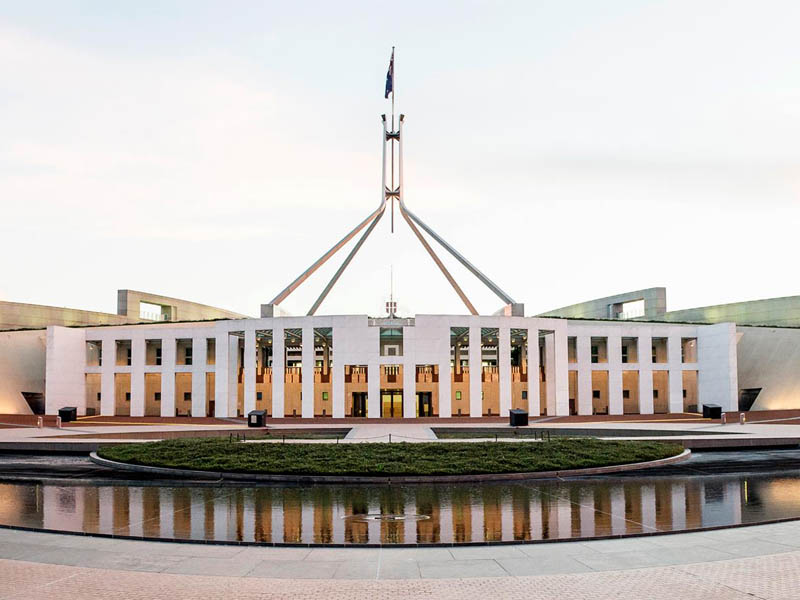Bob Hawke helped make Australia’s economy globally competitive by making the tough but necessary choice of opening it up to the world.
There is no simply denying that, more than three decades after Hawke began his reforms, Australia has since done exceedingly well.
In addition to breaking the world record for the longest number of years of continuous economic growth, it now enjoys one of the world’s highest rates of GDP per capita amid a negligible increase in income inequality over the last quarter century.

But sustaining that prosperity is looking increasingly difficult. The future of the global economy is increasingly about innovation – the sort of innovation that drives productivity and creates new products and industries.
And that’s a game in which Australia unfortunately wins too few gold medals: Australia’s GDP per capita growth has lagged well behind the US and the OECD average over the last decade while Australia’s multifactor productivity has been effectively nil since 2003.
Australia has a globally competitive research capability but lacks a competitive innovation system.
Whether it is Australia’s business spending on research and development (BERD), the level of Australia’s high-tech exports, or its business-research collaboration – Australia ranks near the bottom of OECD, if not last.
This is by no means a new challenge but many of the strategies of the last 30 years simply haven’t worked. Unlike the Hawke reforms, they have not been transformative.
Optimism was rekindled in 2015 with Turnbull’s short-lived enthusiastic campaign for innovation. He famously walked back from that rhetoric, however, when it was thought that many Australians saw innovation as synonymous with job losses.
Regardless of the change in rhetoric, the challenge remains of needing policies that address Australia’s productivity problem and help it build new products, firms and industries for the post-resources future Australia will have to grapple with.
Armed with an election victory, new Liberal Party by-laws against another toppling of a prime minister, and a coalition majority in the House, Morrison can – like Hawke – lead the reforms necessary to address Australia’s long term needs.
Stronger innovation capability is essential for tackling these challenges, it is not an end in itself.
Here are five tough but necessary decisions to be made:
1. Instead of natural resources, the essential resources that will underpin Australia’s future are knowledge and talent. As an open, confident, creative, educated and aspirational society, Australia has these sorts of resources but their supply is not endless.
Innovative firms in Australia have made clear to Canberra that their top talent cannot stay in an environment where skills-based visas are limited, cumbersome and inefficient.
Instead of pushing them away, Australia should be actively seeking to retain talent and to secure investors from other countries – enabling them to create value for themselves and our community.
2. Australia is an outlier in the OECD in its dependence on the R&D tax concession – only one other country (the Netherlands) makes more use of such indirect incentives, as most rely on direct funding to a much greater degree.
In the United States, for example, where the level of government funding for BERD is twice that of Australia, more than 70 per cent of that support is provided through direct funding mechanisms.
A more effective government role would emphasise programs (and innovation agencies) that focus on ambitious innovation outcomes, and redevelop programs based on direct funding to the private sector.
3. As proposed by Innovation and Science Australia (ISA), the Commonwealth government needs to develop more ambitious national missions, rather than vague and inclusive “priorities”, to focus investments in innovation and capability-building.
Many countries have effectively used goal-driven national innovation programs to build competence and collaboration. The mantra that “governments cannot pick winners” ignores the history of industry and innovation and more specifically, how mission- and innovation-oriented programs have been developed in other countries.
Funding for national missions should be redirected from the R&D tax incentive, including recent savings due to changes to the incentive structure, and from increased funding.
4. ISA should be developed into an independent agency to develop, fund and manage national innovation missions based on foresight, road-mapping and extensive consultation.
If ISA were to have this role, its board and staff would need to be substantially strengthened, bringing in more experience with innovation management in diverse industries and areas of technology- as is the case in the successful US innovation agencies DARPA and ARPA-E.
Within clearly established objectives and accountabilities, program managers within ISA should have substantial discretion around funding decisions and performance assessment. Developing effective public-private partnerships would be a central aspect of the agency’s work.
5. Lastly, the government should consider allocating more direct government R&D funding toward the private sector, especially smaller firms, and – if necessary – away from universities and the CSIRO.
Australia’s business expenditures on R&D are near the bottom of the OECD.
The government should seek to stimulate more private sector R&D to develop new innovative firms and talent. Recognising that these will be high-risk investments, funding support should be staged, with tranches based on performance.
Scott Morrison pledged that he wanted everyone in Australia to have a go. If he wants Australia to maintain the lifestyle that it has created for itself over the last quarter century, he – and the governments that follow him – will need to make sure Australia develops an innovation system that enables Australians to have a go an innovative-driven future economy.
Jared Mondschein and Don Scott-Kemmis are research fellows in the Innovation and Entrepreneurship program at US Studies Centre at the University of Sydney. This piece is based on Don’s report, Myths, crises and complacency: Innovation policy in the United States and Australia.
Do you know more? Contact James Riley via Email.
